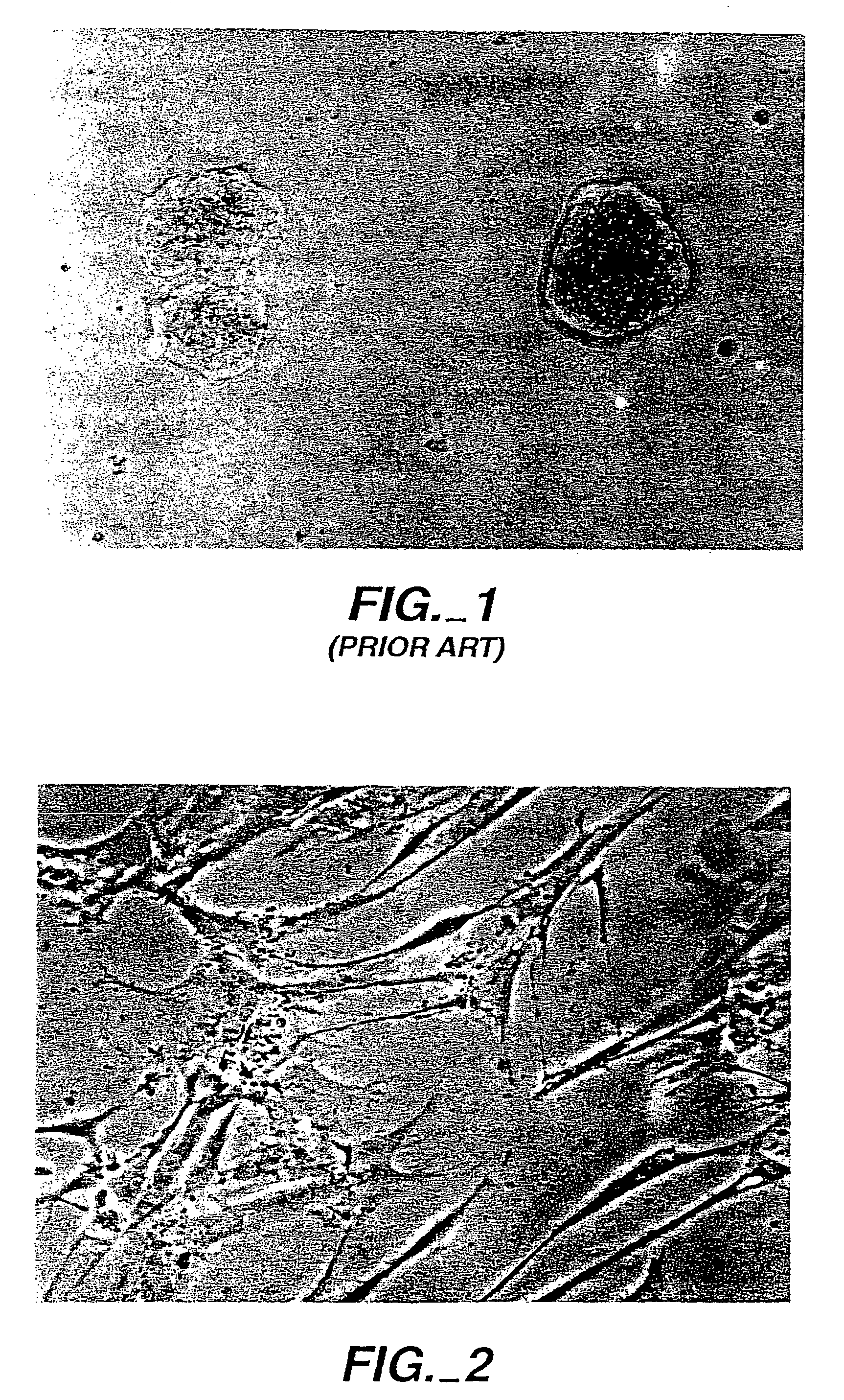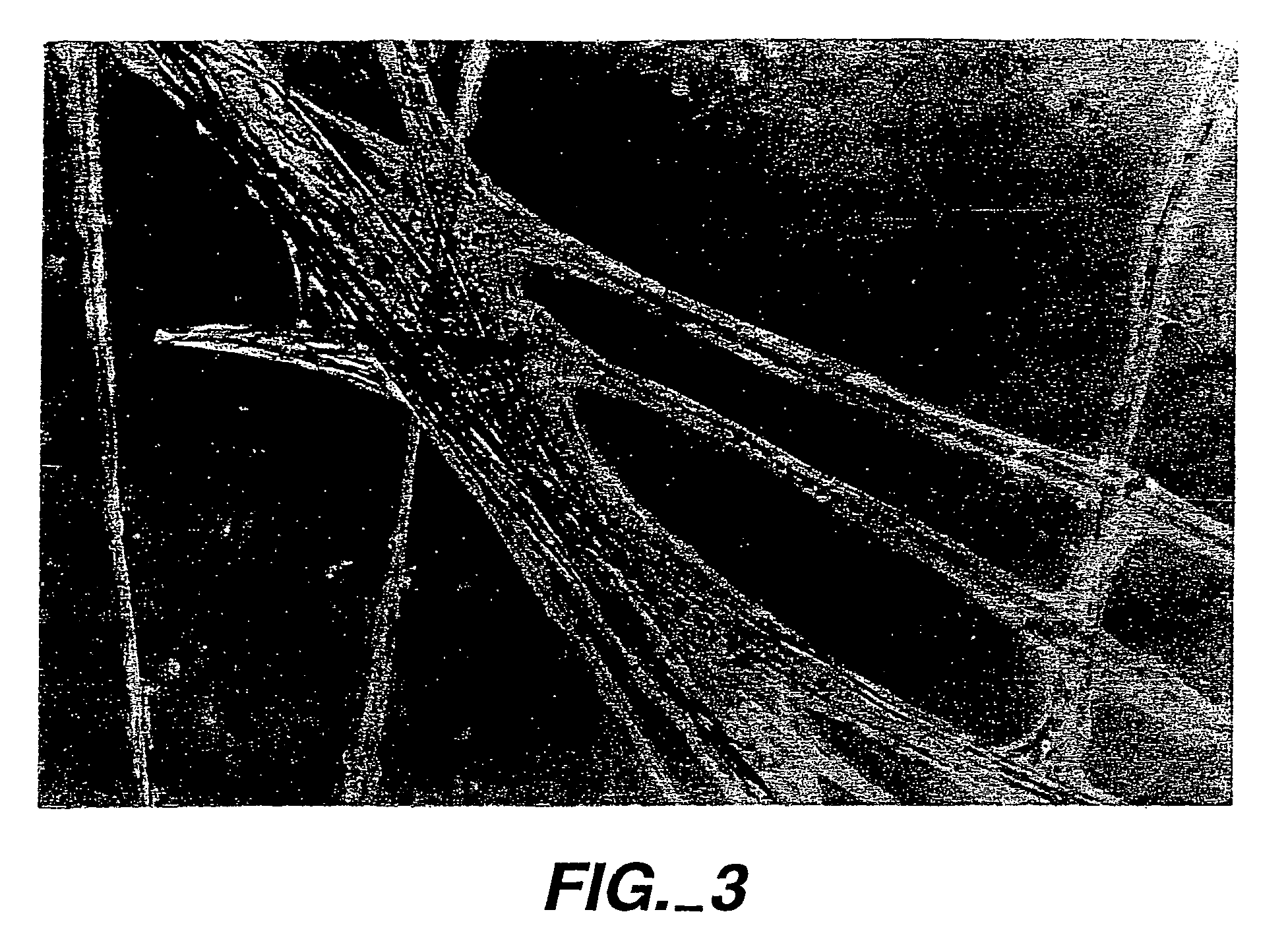Synthetic compounds and compositions with enhanced cell binding
a technology of synthetic compounds and cell binding, applied in the field of compounds, can solve problems such as adverse reactions within the body, and achieve the effects of improving cell binding activity, easy hydrolysis, and enhancing cell binding activity
- Summary
- Abstract
- Description
- Claims
- Application Information
AI Technical Summary
Benefits of technology
Problems solved by technology
Method used
Image
Examples
example 1
[0056]The peptide Gly-Thr-Pro-Gly-Pro-Gln-Gly-Ile-Ala-Gly-Gln-Arg-Gly-Val-Val (SEQ ID NO:1) of the present invention was synthesized by solid phase procedures using symmetrical anhydrides for coupling of Boc-amino acids, except for Q residues that were coupled with 1-hydroxybenzyl triazole. Circular dichroism and 1H and 13C NMR studies suggest that the peptide exists in a random conformation in aqueous solutions and has little tendency to generate collagen or polyproline-like conformations in solution in the presence of helicogenic solvents, but shows a tendency to form a β-strand structure in decreasingly polar solvents.
[0057]All media and supplies for tissue culture were obtained from University of California San Francisco Tissue Culture Facility. Cycloheximide was purchased from Sigma Biochemicals, St. Louis, Mo. Rat tail tendon collagen was purified to homogeneity and characterized in our laboratory using published methods. Tissue culture dishes (35 mm diameter, Falcon Plastics)...
example 2
[0064]Collagen related, but non-inventive peptides, (Pro-Pro-Gly)10 and (Pro-Hyp-Gly)10 (wherein Hyp is hydroxy-proline), were obtained from Peninsula Laboratory, Belmont, Calif. Polyproline was purchased from Sigma Biochemicals, St. Louis, Mo. Dynorphin 1–13 and human preangiotensinogen 1–14 were purchased from Bachem, Torrance, Calif. Three different fibronectin related peptide sequences were also obtained from Bachem and were-used without further analysis.
[0065]The inventive peptide (SEQ ID NO:1) was synthesized as described in Example 1 and the same procedures and conditions of Example 1 were used herein.
[0066]In this experiment to examine the effect of various additives on binding, the additives were added in the medium containing the cells before being transferred to the dishes for the binding assay. It was observed that cell binding to collagen proceeds rapidly in the beginning of the experiment but then slows down after approximately 30 minutes and approximately 70–80% of th...
example 3
[0071]Referring to FIGS. 1 and 2, a prior art agarose gel was prepared with an agarose concentration of 2 mg / ml and between 100,000–200,000 fibroblast cells were placed on the gel surface. The agarose gel had been prepared with a suitable fibroblast cell growth medium and the cells placed on the agarose gel were treated with growth medium; however, the cells died within 48 hours, as is illustrated by the FIG. 1 photograph. By contrast, when 100 μg of the SEQ ID NO:1 peptide was included in an otherwise analogous preparation of agarose gel and fibroblast cells were again placed on top, then the cells not only grew, but actually migrated into the gel itself, as is illustrated by the FIG. 2 photograph taken 72 hours after plating. This was quite surprising because cells normally do not migrate well into gels. The fibroblasts that grew in the inventive gel medium displayed a morphology reminiscent of cells in tissues. The fibroblast population continued to grow rapidly until cells fille...
PUM
| Property | Measurement | Unit |
|---|---|---|
| concentration | aaaaa | aaaaa |
| diameter | aaaaa | aaaaa |
| Tm | aaaaa | aaaaa |
Abstract
Description
Claims
Application Information
 Login to View More
Login to View More - R&D
- Intellectual Property
- Life Sciences
- Materials
- Tech Scout
- Unparalleled Data Quality
- Higher Quality Content
- 60% Fewer Hallucinations
Browse by: Latest US Patents, China's latest patents, Technical Efficacy Thesaurus, Application Domain, Technology Topic, Popular Technical Reports.
© 2025 PatSnap. All rights reserved.Legal|Privacy policy|Modern Slavery Act Transparency Statement|Sitemap|About US| Contact US: help@patsnap.com


